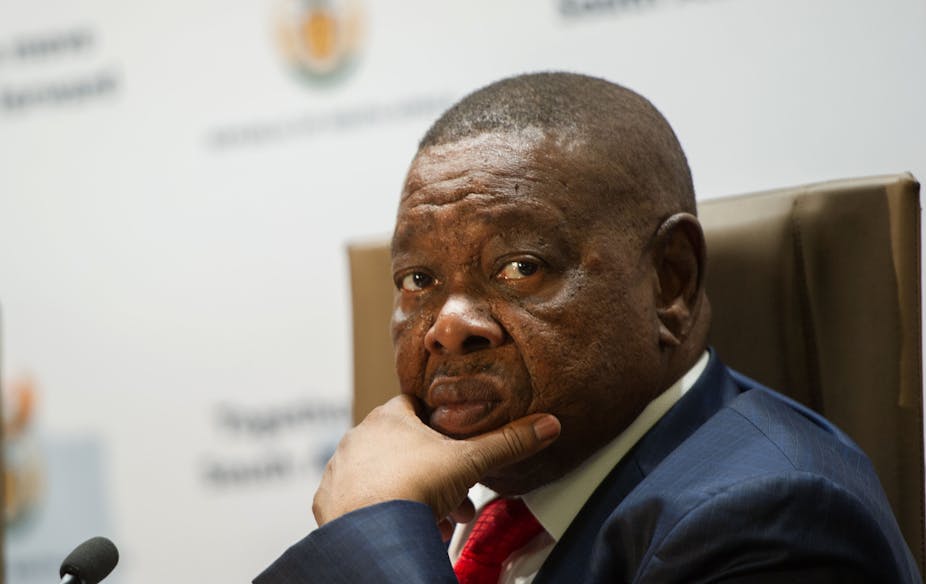A great deal was at stake for South Africa when its Finance Minister Pravin Gordhan delivered his much-anticipated 2016 Budget speech.
University funding was, as always, among the items covered during the speech - but this year South Africans were probably listening more closely than usual. Funding and fee allocations have become a major national talking point since the #FeesMustFall movement emerged towards the end of 2015. The Conversation Africa’s education editor Natasha Joseph asked Professor Ian Scott to talk through some of the issues raised by Gordhan’s budget.
To what extent have the higher education sector’s immediate financial needs been recognised and dealt with in this budget?
Higher education’s most pressing financial needs, which have arisen largely from student protests over the last few months, lie in two areas.
First, the decision to freeze 2016 fees at 2015 levels means that universities have to be compensated - mainly by the state - for the significant gap in their operating budgets that this created. Second, there is pressure to make higher education more affordable, particularly for the large numbers of current and aspirant students from lower-income backgrounds. This requires substantial additional funding for the National Student Financial Aid Scheme (NSFAS), at least as a short-term measure.
In both these respects, higher education has done as well as could have been expected from this budget given the current economic circumstances.
The total additional allocations made for the next three years are:
R5.7 billion for what Gordhan called “the shortfall caused by keeping fees for 2016 academic year at 2015 levels, and the carry-through costs over the MTEF (medium term expenditure framework) period”. This is likely to take the form of additional state subsidy provided to universities as part of their “block grant”, which they can use as they see fit.
R10.5 billion for NSFAS: R2.5 billion “to clear outstanding student debt” and R8 billion “to enable current students to complete their studies”. These amounts are awarded to eligible students to meet their tuition and living costs.
In terms of operating subsidies for the institutions, the detailed Budget Review shows an average annual increase of 9.1% over the next three years. Significantly, a big proportion of this relatively high growth rate is taken up by the compensation for the fee-freeze. The rest goes primarily to providing for inflation and enrolment growth.
This means that the bigger and longer term matter of reversing a significant decline in real per capita subsidy since 2000 - which has forced fees to go ever higher - has not yet been addressed.
Perhaps understandably, given the student protests, the bigger gain is in NSFAS. Its funding is due to grow by an average of 14% a year. The additional billions, coming on top of other significant injections of funds in recent years, must make a real difference to many students’ access to higher education.
Overall, then, within a budget that had to deliver a fine balance between making savings and not undermining key public spending obligations, it can be said that higher education’s most immediate needs were attended to fairly. It remains to be seen what other areas will have to give to achieve this “reprioritisation of resources towards universities”.
How far do these provisions go towards meeting the student demand for free higher education?
Several commentators have argued that ‘free higher education for the poor’ and ‘free higher education for all’ are quite different concepts and actually different ideologies. Even in much more favourable economic conditions, debating and selecting which - if either - of these goals should be pursued, and what the consequences would be, would take considerable time and negotiation. The Presidential Commission that has been appointed to tackle this issue during 2016 faces a considerable challenge.

There was no possibility that this budget could meet the demand for provision of free higher education for the poor, let alone for all. There are a few points to consider when it comes to this issue:
The money given to eligible students by NSFAS, which is generally in the form of loans and has to be supplemented by family contributions, is regarded as falling well short of meeting their actual needs. On top of that, students from households with an annual income exceeding R122,000 are not eligible, yet many in this category cannot afford university. The department of higher education and training estimates that fully funding all students eligible for NSFAS in 2016 would cost R10.7 billion. Even if only tuition fees were totally covered by the state, it would require tens of billions to provide such support to all who need it.
Gordhan’s wording and the Budget Review indicate that the additional subsidy allocation of R5.7 billion is sufficient to “carry through” compensation for the 2016 fee-freeze for three years. But it does not provide for further fee-freezes during this period.
Universities’ operating costs will keep rising every year, creating pressure for fee or compensation increases. The current additional annual allocation will not cover further fee-freezes, so keeping fees at 2015 levels will not be possible without regular injections of new state funds. We are still a long way from being able to substantially reduce fees, let alone eliminate them.

